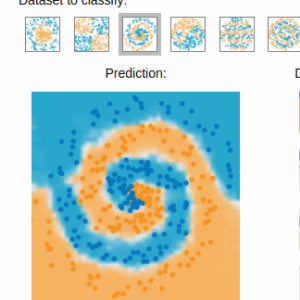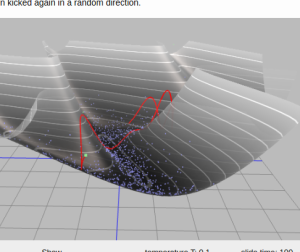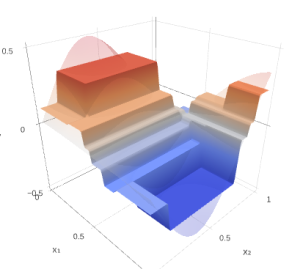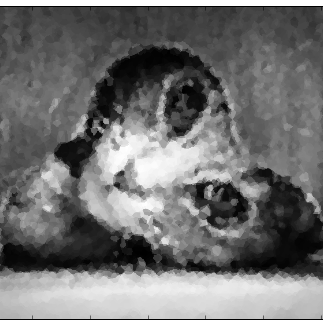Numbers and Naturalness, part 2.
And this is great advantage of their definition. To define the multiplication and summation of real numbers, you should have these operations defined on rational numbers (and some properties of these operations proved). Then, having defined the metric on $\Bbb{Q}$, one completes this set and redefines the operations by continuity. Yes, this is not the simple thing, but I hope you remember it from university mathematics courses.
Just the opposite thing with p-adic numbers. The definition of addition and multiplication is quite straightforward. But what is more interesting, there is an abstract construction, which can be used to define p-adic numbers. The construction is called the inverse limit
Remember I was talking about understanding a p-adic number as some limit? Let us consider now only p-adic integers, these are not usual integers. They may have infinitely many nonzero digits, but all the digits after the dot should be zero. Hereinafter in all the examples p=7.
...4123490 integer
...3459902.0 integer
...3459902 integer (the same as previous one)
...234 integer
...2314123.456 non-integer
...000.001 non-integer
Let us now consider only integer numbers. This set is closed under the operations of addition and multiplication. Moreover, the last $n$ digits of the result is fully defined by the last $n$ digits of operands.
...35143 + ...01251 = ...36424
3 + 1 = 4
43 + 51 = 24
143 + 251 = 424
5143 + 1251 = 6424
35143 + 01251 = 36424
... + ... = ...
3 mod $7$
43 mod $7^2$
143 mod $7^3$
5143 mod $7^4$
35143 mod $7^5$
result: ...35143
$x_1$ 3 mod $7$
$x_2$ 52 mod $7^2$
$x_3$ 413 mod $7^3$
$x_4$ 6556 mod $7^4$
result: ...???
$$ f_{n+1,n}(x_{n+1}) = x_n $$
In the case under consideration $X_n = \Bbb{Z} / {p^n}\Bbb{Z}$, $f_{n+1,n} (x) = x \; \text{mod} \; p^n$.
The most important moment: we have addition and multiplication defined on each $X_n$, and $f_{n+1,n}$ preserve these operations (they are homomorphisms). That's how we obtain multiplication and addition in the ring p-adic integers: the result would satisfy consistency properties.
This is the simplest and the most vivid example of inverse limit, wikipedia article contains the general case with posets. Well, as you can see, this is purely algebraic construction, and mathematically it is more natural.
Exercise#1 (very easy): find cardinality of the set of p-adic numbers.
Exercise#2: recall that the distance between two p-adic numbers was defined as $p^{-n}$, where $n$ is the number of rightest digit in which two numbers do not coincide. Can we take $2^{-n}$ as the distance?
Exercise#3: prove that one can subtract two p-adic integer numbers.
Mapping Rational Numbers
The thing that is maybe not so obvious is that all nonzero p-adic numbers are invertible (thus we have
division operation). It is small but very helpful exercise. The second fact is p-adic numbers contain natural
ones
Let us take some natural number in radix-7: 41524, for instance. The corresponding p-adic is
...000041524 = (0)41524, that is just has infinite number of zeros added to the left.
Now try to
guess
what is this number equal to: .....666666?
The answer is -1. You may be wondering why. Try to add 1 and you will obtain zero. Or subtract one from
zero.
The second way to see this is to compute -1 modulo $7^n$.
Each time you will get $66...6$ ($n$ times 6).
If you have ever learned something about C programming language or
assembler, this should remind you something...
If it doesn't, let me help you
00000001 = 1
00000000 = 0
11111111 = -1
11111110 = -2
Right, it is the two-complement number representation. The ...666666 is the 7-complement notion of -1. It arises naturally in the p-adic numbers though in CS courses may look a bit strange.
Let's now think of rational numbers. Once we have division, our field of p-adic numbers should contain $1/2, 1/3, 1/5$ and so on.
What we can say immediately is that 7-adic form of $1/7$ is
...00000.1
and
the form of $1/49$ is
...00000.01
and so on.
But what about $1/4$? Let us compute it from the equation
(remember all the numbers are in radix-7!)
$$...0004 \times x = ...0001 = (-1)\times(-1) = (-1) \times ...66666$$
$$x = (-1) \times ...66666 / 4 = (-1) \times ...010101 \times 66_7 / 4_7 $$
Some simple computations now:
$$ 66_7 / 4_7 = 48_{10} / 4_{10} = 12_{10} = 15_7 $$
And the last step:
$$ x = (-1) \times ...010101 \times 15_7 = ...151515 = ...515152 $$
Exercise#4: Make sure that $4 \times ...515152 = ...000001$
Exercise#5: Compute $1/5$ in the same way.
Hint: $6666_7 = 2400_{10} = 5 \times 480_{10} = 1251_7$
This is not the only way to divide p-adic numbers, you may try to invent the other procedure (long division in p-adic numbers). As one can notice, the rational numbers in p-adic notion look very similar to their notion in real numbers, namely, their notion is periodic to the left starting from some point.
 Gradient boosting
Gradient boosting  Hamiltonian MC
Hamiltonian MC  Gradient boosting
Gradient boosting  Reconstructing pictures
Reconstructing pictures  Neural Networks
Neural Networks